Standard [CURRENT]
ASTM F 2064:2025
Standard Guide for Characterization and Testing of Alginates as Starting Materials Intended for Use in Biomedical and Tissue-Engineered Medical Product Applications
- Publication date
- 2025
- Original language
- English
- Pages
- 9
- Publication date
- 2025
- Original language
- English
- Pages
- 9
- DOI
- https://dx.doi.org/10.1520/F2064-25
Product information on this site:
Quick delivery via download or delivery service
Buy securely with a credit card or pay upon receipt of invoice
All transactions are encrypted
Short description
1.1 This guide covers the evaluation of alginates suitable for use in biomedical or pharmaceutical applications, or both, including, but not limited to, tissue-engineered medical products (TEMPs). 1.2 This guide addresses key parameters relevant for the functionality, characterization, and purity of alginates. 1.3 As with any material, some characteristics of alginates may be altered by processing techniques (such as molding, extrusion, machining, assembly, and sterilization) required for the production of a specific part or device. Therefore, properties of fabricated forms of this polymer should be evaluated using test methods that are appropriate to ensure safety and efficacy which are not addressed in this guide. 1.4 Warning- Mercury has been designated by the European Commission, United States EPA, and many other jurisdictions as a hazardous material that can cause central nervous system, kidney, and liver damage. Mercury, or its vapor, may be hazardous to health and corrosive to materials. Caution should be taken when handling mercury and mercury-containing products. See the applicable product Safety Data Sheet (SDS) for details and websites for the European Commission (https://environment.ec.europa.eu/topics/chemicals/mercury en) and the United States EPA (http://www.epa.gov/mercury/faq.htm) for additional information. Users should be aware that selling mercury or mercury-containing products, or both, in your jurisdiction may be prohibited by law. 1.5 This standard does not purport to address all of the safety concerns, if any, associated with its use. It is the responsibility of the user of this standard to establish appropriate safety, health, and environmental practices and determine the applicability of regulatory limitations prior to use. 1.6 This international standard was developed in accordance with internationally recognized principles on standardization established in the Decision on Principles for the Development of International Standards, Guides and Recommendations issued by the World Trade Organization Technical Barriers to Trade (TBT) Committee.
ICS
11.040.40
DOI
https://dx.doi.org/10.1520/F2064-25
Also available in
Loading recommended items...
Loading recommended items...
Loading recommended items...
Loading recommended items...

